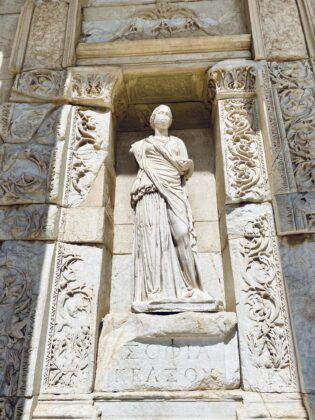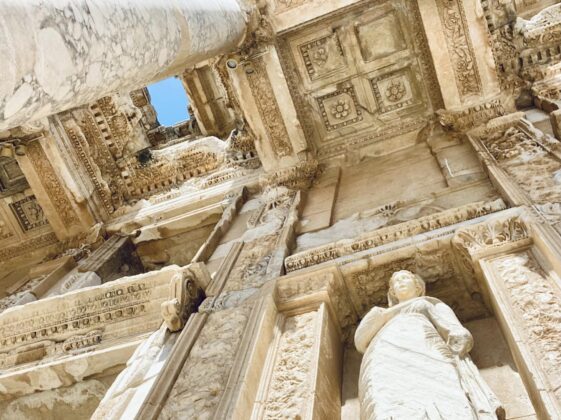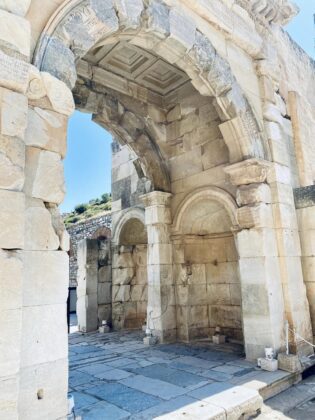
Ruslan Yordanov, the Bulgarian travel blogger, shared a glimpse of his visit to Ephesus, Turkey. He stated that Ephesus is one of the favourite destinations for tourists visiting Turkey – with a cruise to Kusadasi or part of the programs of Bulgarian tour operators.
The ancient city is located about 50 km south of Izmir, today not far from the Turkish coast of the Aegean Sea, and in the past, it was on the very shore at the mouth of the Byuk Menderez River, which over time fills the bay and the city is no longer on the coast.
The fame of Ephesus is mainly due to the local cult of the eastern goddess of fertility, with time alienated from the Greek goddess Artemis. The worship of the goddess has been performed for unprecedented times but in the first half of the VI century BC. nh. Is. Construction of the temple of Artemis, which has become one of the seven wonders of the ancient world, begins.
The city was founded as a port on the coast of the Aegean Sea and is developing rapidly due to trade. Towards 500 years, it was moved to Ayyasoluk Hill near today’s Selchuk town, as the bay was filled with floods.
Subsequently, the sea continued to recede, causing the city’s decline. Earthquakes and landslides finally bury the ruins and thus preserve them for archaeologists. Today, the ruins of Ephesus, largely reconstructed, are about 6 kilometres from the seashore of the saddle between two hills.
Ephesus and its inhabitants are mentioned many times in the Acts of the Apostles (Acta Apostolorum). The Church of the Ephesus is in Revelation of John as one of the seven churches of the Apocalypse.
The first archaeological excavations were made in 1869. from English scientists who discovered the city on the hill moved there by Lysimach, and so the world learns about the beauty of the ancient city. Today, the archaeological area of Ephesus covers over ten kilometres in the vicinity of the Turkish town of Selchuk, whose museum collects unique finds.
One of the inspiring ancient buildings in Ephesus is the Library of Cels. It was built between 114 and 125. by Tiberius Julius Aquila Polemean in honour of his father, Tiberius Juliy Cels Polemean. Father and son are Roman senators and consuls. At the bottom is the tomb chamber, where the marble sarcophagus of Cels was laid.
The rich Ephesians Tiberius Claudius Arission completed the library and held 12,000 books – rolls placed in niches. It is 23 m long and 17 m deep. , the interior is on three floors measuring 16.72 x 10.92 m. At the end of the 3rd century, it suffered a fire and an earthquake. It has not been restored after that.
1905 1906 it was dug in 1970 – 1978, the facade was erected. Today, the terrace houses in Ephesus – opposite the Temple of Adrian, are covered with a protective roof, mosaics on the floors and frescoes on the walls are preserved, and the whole complex is open to tourists.






